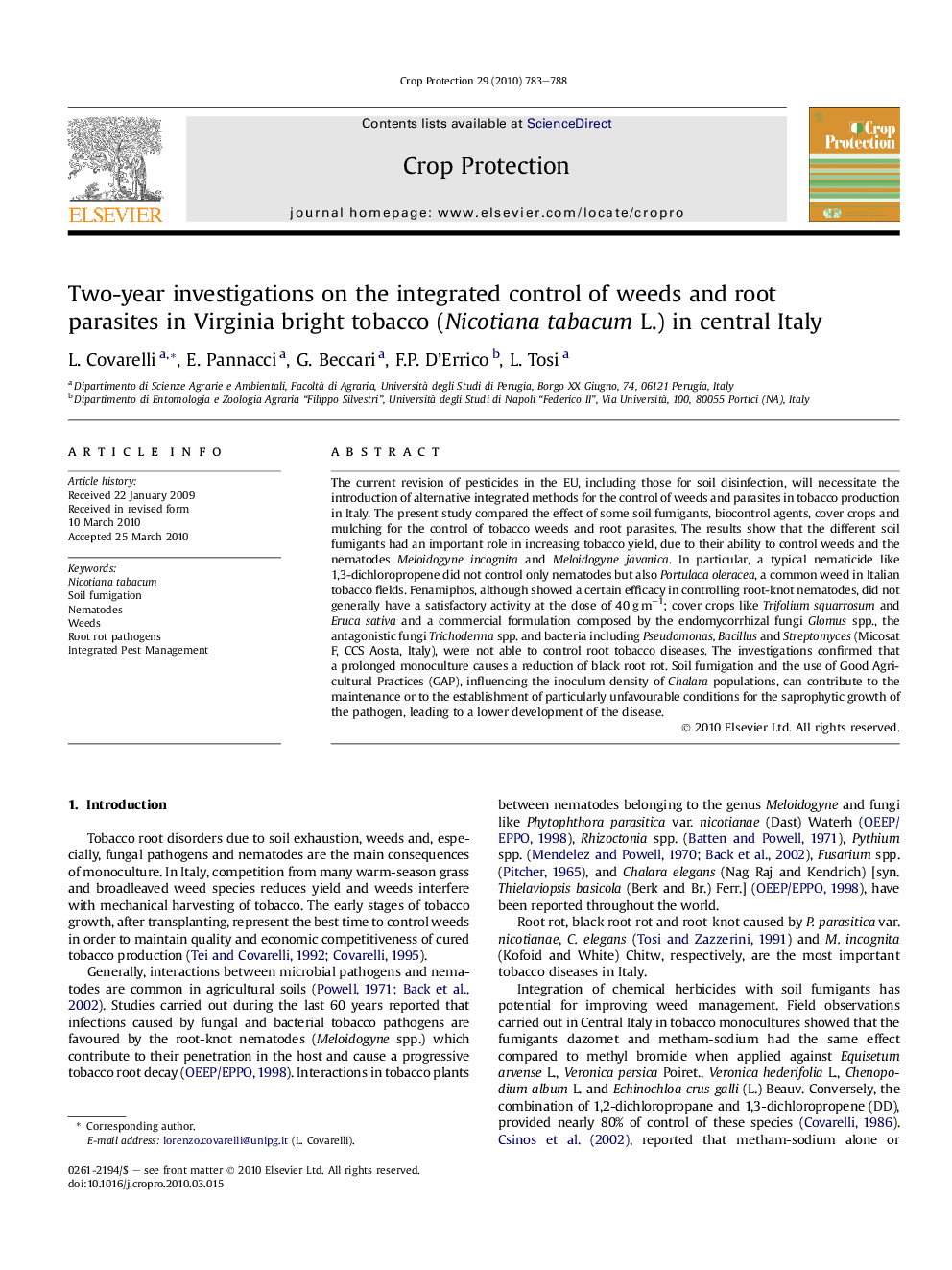| کد مقاله | کد نشریه | سال انتشار | مقاله انگلیسی | نسخه تمام متن |
|---|---|---|---|---|
| 4506729 | 1321327 | 2010 | 6 صفحه PDF | دانلود رایگان |

The current revision of pesticides in the EU, including those for soil disinfection, will necessitate the introduction of alternative integrated methods for the control of weeds and parasites in tobacco production in Italy. The present study compared the effect of some soil fumigants, biocontrol agents, cover crops and mulching for the control of tobacco weeds and root parasites. The results show that the different soil fumigants had an important role in increasing tobacco yield, due to their ability to control weeds and the nematodes Meloidogyne incognita and Meloidogyne javanica. In particular, a typical nematicide like 1,3-dichloropropene did not control only nematodes but also Portulaca oleracea, a common weed in Italian tobacco fields. Fenamiphos, although showed a certain efficacy in controlling root-knot nematodes, did not generally have a satisfactory activity at the dose of 40 g m−1; cover crops like Trifolium squarrosum and Eruca sativa and a commercial formulation composed by the endomycorrhizal fungi Glomus spp., the antagonistic fungi Trichoderma spp. and bacteria including Pseudomonas, Bacillus and Streptomyces (Micosat F, CCS Aosta, Italy), were not able to control root tobacco diseases. The investigations confirmed that a prolonged monoculture causes a reduction of black root rot. Soil fumigation and the use of Good Agricultural Practices (GAP), influencing the inoculum density of Chalara populations, can contribute to the maintenance or to the establishment of particularly unfavourable conditions for the saprophytic growth of the pathogen, leading to a lower development of the disease.
Journal: Crop Protection - Volume 29, Issue 8, August 2010, Pages 783–788